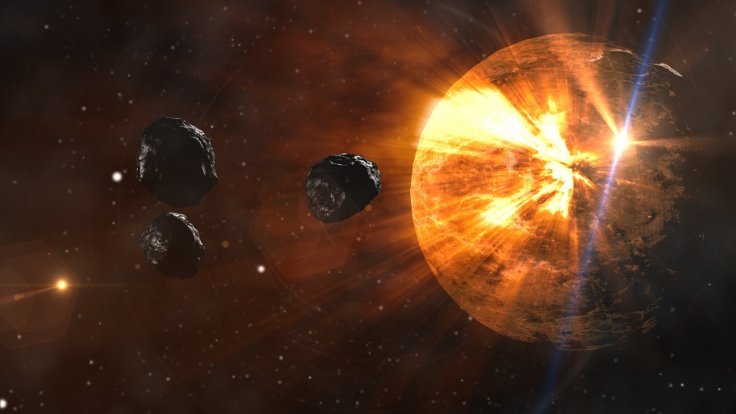
1998 OR2, a giant asteroid measuring almost 4km in diameter will safely zip past the earth tomorrow (April 29), and space experts have already assured that the chances of a collision are pretty less. During the time of its close approach, the rogue space body will be almost 3.9 million miles away from the earth, which means the asteroid will miss a collision with the blue planet by about 16.36 times the distance between the earth and the moon.
What will happen if asteroid 1998 OR2 hits the earth?
As per analysis conducted by NASA, asteroid 1998 OR2 is currently screeching across space at a speed of 31,000 kph. Even though the asteroid is not as big as the space rock which hit the earth and caused the extinction of dinosaurs, space experts believe that a potential collision could leave a six-mile-wide crater and darken the world with dust.
"It's just a whopping big asteroid. It's smaller than the thing thought to have caused the extinction of the dinosaurs, but it is easily capable of causing a lot of damage," said Amy Mainzer, a researcher at the University of Arizona, National Geographic reports.
As space experts believe in the possibility of a potential collision in the future, NASA is planning to launch a spacecraft next year which will be the space agency's strategy to stop an approaching killer asteroid.
The mission, now known as DART (Double Asteroid Redirection Test), NASA will be slamming a spacecraft into an asteroid, so that the original collision course trajectory of the space body can be changed.
The problem associated with a crowded solar system
The solar system in which the earth is located is very violent, and there are several asteroids that lurk near the orbit of all planets. In this crowded solar system, it is very much necessary to spot killer asteroids to effectively use NASA's DART system to avoid a potential collision in the future.
"There are literally hundreds of thousands of asteroids out there, and we want to separate out those we should keep a closer watch on and monitor over time," said Lindley Johnson, NASA's planetary defense officer.
Asteroid belt holds the key
A few months back, a study conducted by researchers at the National Astronomical Observatory in Japan had suggested that asteroids lurking in the asteroid belt could one day approach the earth for a potential collision.
The research report also revealed that it is rather difficult to spot the asteroids from the earth, as most of them are tucked in the shadow of Jupiter. However, once the orbits of the asteroids become unstable, it will pose a huge threat to the earth.









